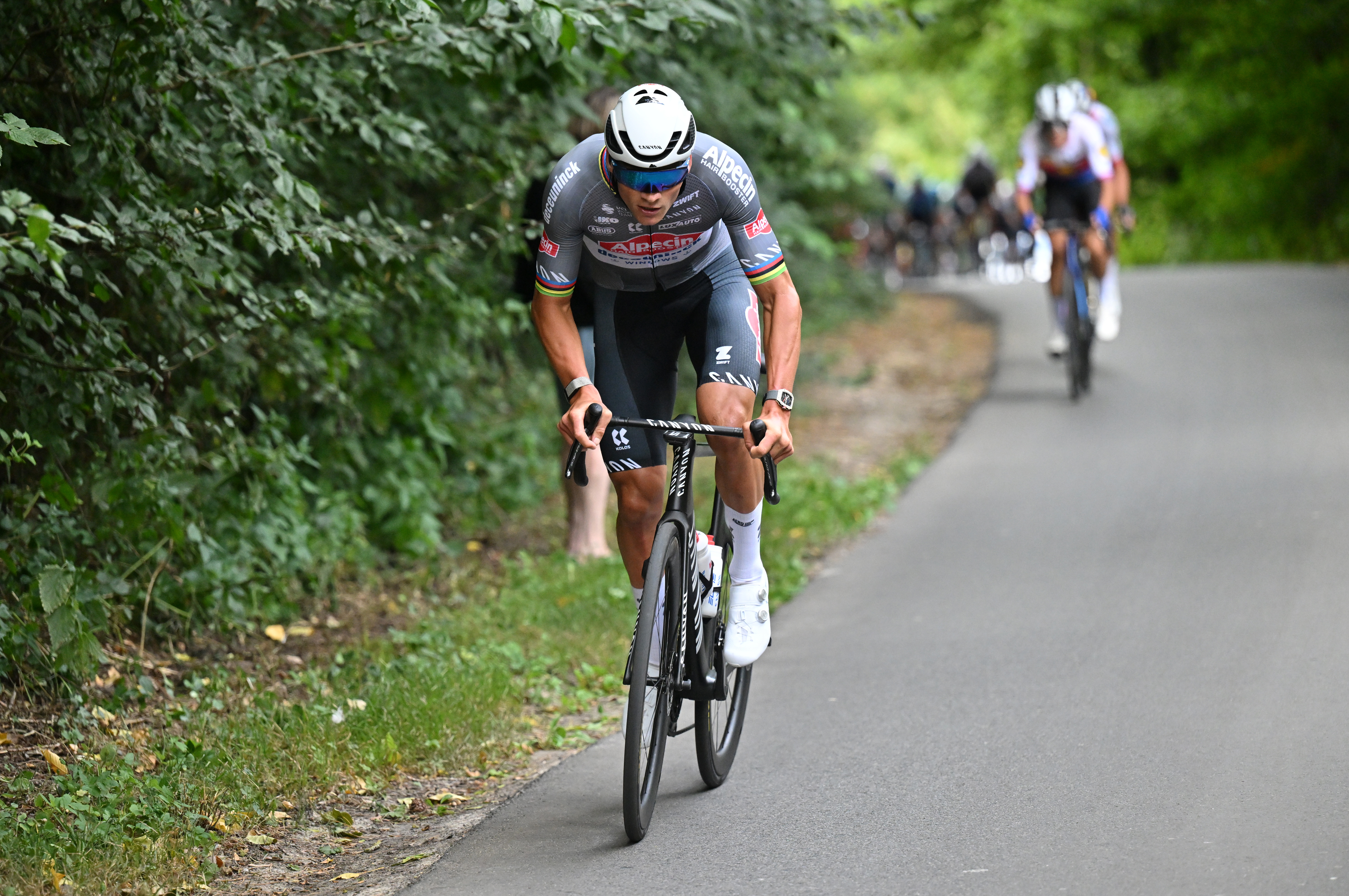2010 Tour de France: A taste of the Classics
97th Tour pays tribute to the mountains
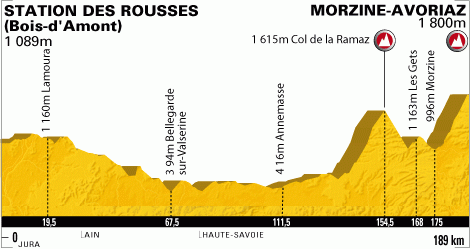
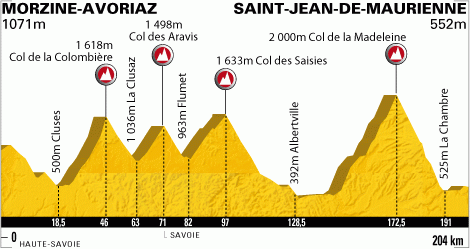
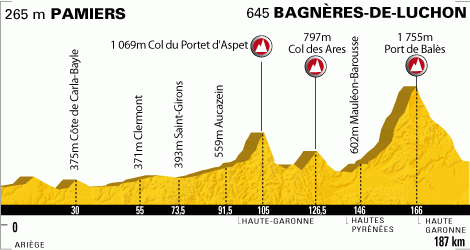
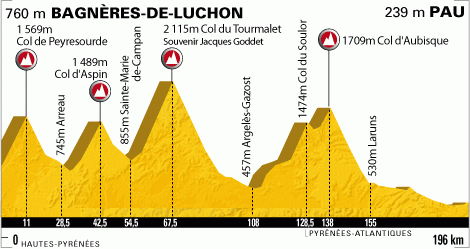
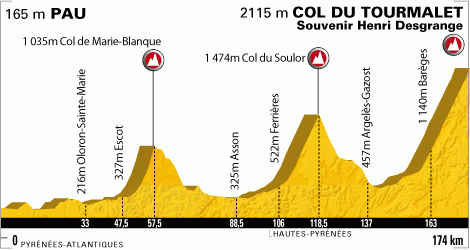
It is a Tour for climbers and escapists that Christian Prudhomme, director of the greatest bike race on earth, presented to the public today in the Palais des Congrès in Paris. Fittingly, the new official design of the event features the shape of France as one huge rock to master, and one could already sense the challenges and difficulties of the road ahead as the Frenchman unveiled the map at precisely 12:18pm.
For the first time since Prudhomme took the reigns of the Tour, he has not used any decisive novelties. Rather, he stuck to proven formulas whilst at the same time keeping some changes he has made since taking over the job from Jean-Marie Leblanc in 2007.
The 2010 Tour de France will be an open one, with less time trialling and more climbing: a total of 23 second, first and HC categorized climbs await the riders and "only" 59 kilometres against the clock - when in the past, this amount often hovered around a 100 in total.
Three real summit finishes will have to be tackled, five if you count in the medium mountain finishes in Les Rousses and Mende. Moreover, Prudhomme discarded the team time trial - again - which was only included in this year's race after three years of absence.
Actually, not a word was said about the absence of the collective test that generated much discussion last July. Instead, Prudhomme presented a "classical" route of a Tour which will celebrate the 100th anniversary of the race's first mountains in the Pyrenees, as well as pay tribute to the Northern cobblestone Classics.
A taste of the Northern Classics
Starting in the Netherlands for the fifth time in its history, the 97th Grande Boucle will run over the flat sea land during two days before entering its neighbouring state, Belgium. The traditional prologue will take place in Rotterdam on July 3 and lead over some of the many canal bridges that mark the harbour city.
The latest race content, interviews, features, reviews and expert buying guides, direct to your inbox!
A perfectly flat parcours, eight kilometres long, the prologue should see a strong specialist or even a sprinter take the first yellow jersey, certainly celebrated by a huge crowd in the Dutch metropole.
The Tour will then move to Belgium over Zeeland's many dikes, where wind and rain could provide the first scares to the GC riders. The finish of the Tour's first stage will be hosted in Brussels, which it last visited in 1992, and start in the European capital on the next day, too.
Heading south towards Spa, stage two will pay tribute to the Ardennes Classics of Flèche Wallonne and Liège-Bastogne-Liège, taking on six of its famous climbs before finishing on a 1800 metres-long straight in the mineral water town for another possible bunch sprint finish.
It will only be on July 6 that the 2010 Tour will come "home" to France from Belgium, with stage three of the event finishing in Arenberg - the famous Arenberg of the cobblestone section legendary to the "Hell of the North", Paris-Roubaix.
Another homage by the event organiser to the Spring Classics will see a seven pavé sectors (a total of 13.2 kilometres), including the Haveluy sector, ridden by the Tour peloton before the finish just outside the forest cobbles section. The bumpy rocks will certainly add to the spectacle during one of the highlights of the Tour's first week.
Towards the Alps
The sprinters' days continue with stage four, five and six through the regions of Champagne and Bourgogne, all three tailor-made for the fast men who might enjoy some bubbles in finishing towns Reims, Montargis and Gueugnon. GC contenders, however, should remain vigilant of fierce sidewind in the plains of Northern and Central France.
On Saturday, July 10, the 2010 Tour will then celebrate its first fireworks as the race moves towards the Alps through the hilly region of Jura, where a first uphill finish is planned in the medium-mountain ski station of Les Rousses. A total of six climbs, amongst which the Croix de la Serra (1,049 metres above sea level) will be a first test for the mountain men and GC contenders. The finish line, however, is located four kilometres after the summit.
The next day will be the first full contact day with high mountains peaks. The first true mountain summit finish of three will take place on the slopes of ski station Avoriaz, after the bunch already tackled the first Cat. 1 climb of Ramaz.
A rest day in Morzine-Avoriaz on Monday will be a much-needed break for the riders, and an opportunity to sum up the first week of racing, before the riders take on the second major Alpine stage on Tuesday, July 13.
Four high-category climbs (Colombière, Aravis, Saisies and Madeleine) will pave the way on stage nine to Saint-Jean-de-Maurienne, and while this will be no summit finish with the last Col 30 kilometres away from the line, it will be classical day to attack.
The same applies to the next stage, which takes place on Bastille day when French riders are sure to make a move. From Chambéry to Gap, two difficulties will be the springboards for escapists who - hopefully - will not suffer the same fate as Joseba Beloki on the descent to the finishing town in 2003, as it is the exact same route which saw Lance Armstrong cut across a field when Beloki crashed out of the race that year.
A sprinter's transitional stage from Sisteron to Bourg-lès-Valence will pave the way out of the first mountain range of the 2010 Tour, into the Drôme department where a one kilometre finishing straight await the fast men on July 15. On the next day, the "Jalabert" climb to the runway of the airfield in Mende will surely see another mountain man take the honours. This stage could also be seen as a summit finish were it not for the last few flat kilometres to the line on the windy plateau.
The Pyrenees - 100 years of history
On Saturday, July 17, the bunch will then move further south to Revel, from which the first of the four Pyrenean stages will start on Sunday. During four days, not counting the race's second rest day in Pau on Wednesday, July 21, two summit finishes - in Ax-3 Domaines and on the famous Tourmalet - and a total of 12 categorized climbs will honour the race's first contact with the mountains passes a 100 years ago, in 1910.
A true festival of climbing, which will feature such legendary Cols as the Peyresourde, Aspin, Aubisque, Marie-Blanque and Soulor, as well as the Tourmalet itself, raced twice, will definitely prove decisive for the general classification standings.
The Tourmalet, where Eugène Christophe broke his fork in 1913 and had to weld it again himself in Sainte-Marie de Campan, will indeed be celebrated with a first passage on stage 16, via La Mongie. It will be visited a second time as a summit finish via Barèges, its steepest side, after the rest day.
That stage, number 17, will be the highlight of the days spent in the Pyrenees, and also provide the route to the L'Etape du Tour cyclosportive planned for July 18. It will only be the second time since 1974 that a stage finishes on the Tourmalet.
After another transition day, the Tour will finally be decided in Bordeaux during the first and last long time trial of the race, totalling 51 kilometres from the centre of town out to Pauillac, on undulating roads through the finest Bordeaux and Médoc vineyards.
The amount of time trialling has been reduced "voluntarily", said race director Prudhomme, who hoped that more climbing, especially on the medium-mountain stages in the Jura and Cévennes regions [stages 7 and 12 - ed.], will add further spice to the race.
High Mountain Stages
Stage 8: Station des Rousses - Morzine-Avoriaz - 189 km
Km 154,5 - Col de la Ramaz - 14 km climb to 6,9 %
Km 189 - Avoriaz - 13,6 km climb to 6,1 %
Stage 9: Morzine-Avoriaz - Saint-Jean-de-Maurienne - 204 km
Km 46 - Col de la Colombière - 16,5 km climb to 6,7 %
Km 71 - Col des Aravis - 7,6 km climb to 5,9 %
Km 97 - Col des Saisies - 14,4 km climb to 5,1 %
Km 172,5 - Col de la Madeleine - 25,4 km climb to 6,1 %
Stage 15: Pamiers - Bagnères-de-Luchon - 187 km
Km 105 - Col du Portet d’Aspet - 5,8 km climb to 6,8 %
Km 126,5 - Col des Ares - 6,1 km climb to 4,7 %
Km 166 - Port de Balès - 19,2 km climb to 6,2 %
Stage 16: Bagnères-de-Luchon - Pau - 196 km
Km 11 - Col de Peyresourde - 11 km climb to 7,4 %
Km 42,5 - Col d’Aspin - 12,3 km climb to 6,3 %
Km 72 - Col du Tourmalet par La Mongie - 17,1 km climb to 7,4 %
Km 128,5 - Col du Soulor - 19 km climb to 5,3 %
Km 138 - Col d’Aubisque par le col du Soulor - 5,4 km climb to 6 %
Stage 17: Pau - Col du Tourmalet - 174 km
Km 57,5 - Col de Maris-Blanque - 9,5 km climb to 7,5 %
Km 118,5 - Col du Soulor par Ferrières - 22 km climb to 4,9 %
Km 174 - Col du Tourmalet par Barèges - 19 km climb to 7,4 %
Rider reactions
Lance Armstrong welcomed the decision of reducing the kilometres against the clock. "Based on my TT this year, I have to be glad it's less," the seven-time Tour winner commented, whilst at the same time regretting the absence of the team time trial.
"We have a good team, a team that can support a rider for the classification. The only unfortunate thing for us is we don't have a team TT. We suspected that because of the effect it had on the race this year."
The last edition's winner, Alberto Contador, also showed great satisfaction when viewing the route. "I like this parcours more than the one we had this year," he said.
"There is more climbing, which suits me. The finale on the Tourmalet is awesome, it will make for great spectacle."
Another one of Contador's challengers, Andy Schleck, also welcomed the new shape of the Tour.
"Actually the first feeling was that it doesn't look too hard but looking more at the details I think it's even harder than 2009," said the Luxemburger.
"The mountains are full of long and tough stages and the Tourmalet and Marie-Blanque stage [stage 17 - ed.] is going to be hard. The race is going to be decided in the mountains."
Like in the last two editions, there will be no time bonuses for intermediate sprint or stage winners in 2010, as race director Prudhomme prefers the overall victor achieveing his feat in real time, faithful to tradition.
